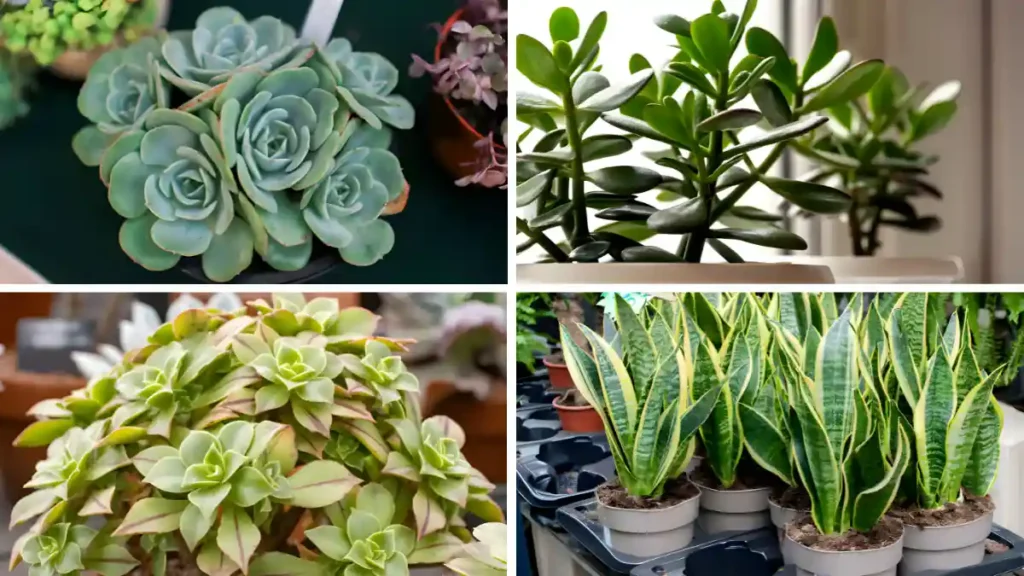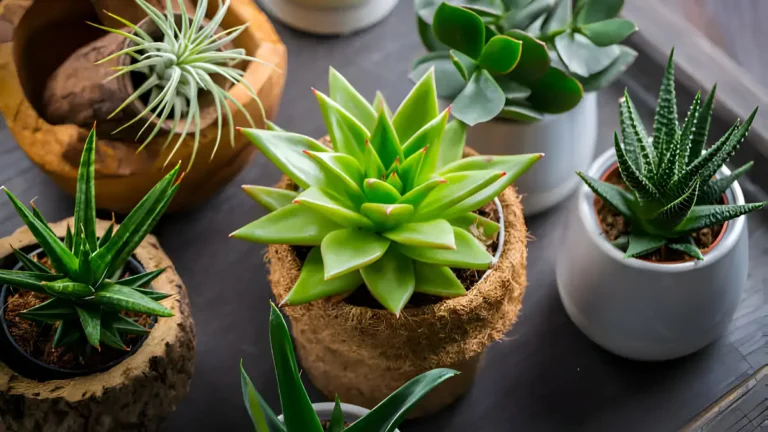The varied family of plants known as succulents is distinguished by its large, meaty leaves and capacity to retain water in dry environments. They are well-liked for both indoor and outdoor gardens since they are available in a variety of sizes, shapes, and colors.
Here’s an overview of several typical succulents:
- Echeveria: Known for their vivid colors and rosette-shaped foliage, echeverias are among the most well-liked varieties of succulents. They range in color from deep purples to pastel pinks.
- Snake Plant: Sansevieria, often known as mother-in-law’s tongue or snake plant, is a genus of about 70 species. These almost unbreakable plants are frequently planted inside, where they benefit from warmth and bright light. However, certain varieties can also withstand low light and humidity.
- Sempervivum: Also referred to as hens and chicks, sempervivums grow slowly into tightly packed rosettes. These are hardy plants that are frequently used as ground cover and in rock gardens.
- Senecio: Senecios are a broad category of succulents that grow in a variety of ways, such as compact, erect, or trailing. Their easy care and intriguing foliage make them valuable.
- Aloe: Aloe plants are well-known for their ability to heal wounds and irritations of the skin thanks to their gel-filled leaves. They usually come in different sizes and feature teethed, spiky edges.
- Crassula: Among the Crassulas are jade plants, which are distinguished by their glossy, thick leaves and tree-like growth pattern. They are popular houseplants that are thought to bring riches and good fortune.

- Agave: Agaves are big succulent plants with striking sword-shaped leaves that frequently have pointed points. They are used to manufacture tequila and are frequently found in desert environments.
- Aeonium: The stylized rosettes that emerge at the tips of the branch-like stalks are similar to those of other succulents, like Sempervivum and Echeveria. Aeonium arboreum ‘Zwartkop’ (seen) has dark magenta-black rosettes that are truly leaves. Clusters of flowers will open in late winter or early spring from the rosette’s center. Aeonium can also have leaves that are variegated white, yellow, green, or red.
Conclusion:
To sum up, succulents comprise a wide variety of plant species, each with distinct traits and adaptations to thrive in arid conditions. These are only a handful of the many varieties of succulents that gardeners and plant enthusiasts can choose from. They are a pleasant addition to any collection, with each variety offering its distinct beauty and qualities. Discovering the world of succulents may be a fulfilling experience for any level of gardener, one that is full of beauty, resiliency, and limitless opportunities for creative interior and outdoor design.
Certainly! If you’d like to learn more, please consider following our WhatsApp Channel: Harvest Gardening
A frequently asked questions:
Q1: How often should I water my succulents?
A1: In general, succulents prefer little to no watering. After the soil is totally dry, water it well. Depending on sunlight and humidity, this is usually done every one to two weeks.
Q2: How to propagate succulents?
A2: There are various ways to reproduce succulents, such as offsets, stem cuttings, and leaf cuttings. Just give the cuttings a few days to harden off before putting them in soil that drains well so they may take root.
Q3: What are the best types of succulents for beginners?
A3: Because of their endurance and low maintenance needs, Echeveria, Haworthia, and Jade plants make great first plants.

